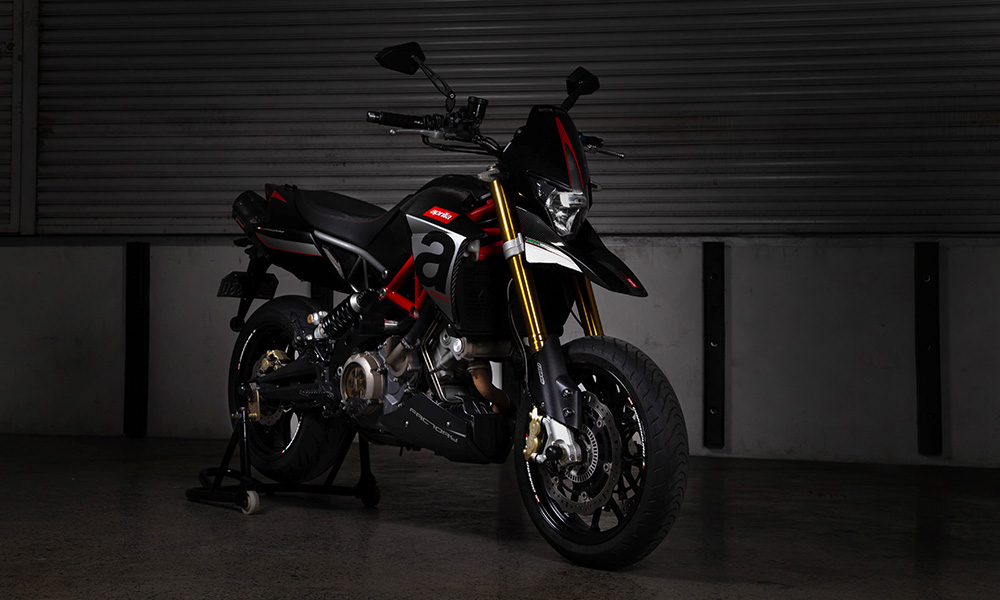
Back in the mid-2000s, Aprilia won two riders’ championships and four manufacturers’ titles in the Fédération Internationale de Motocyclisme’s S1 and S2 Supermoto racing series from 2004 to 2008.
“Win on Sunday, sell on Monday,” they say. And so, in 2008, off the heels of the brand’s supermoto success came this supermoto-style bike: the Dorsoduro 750.
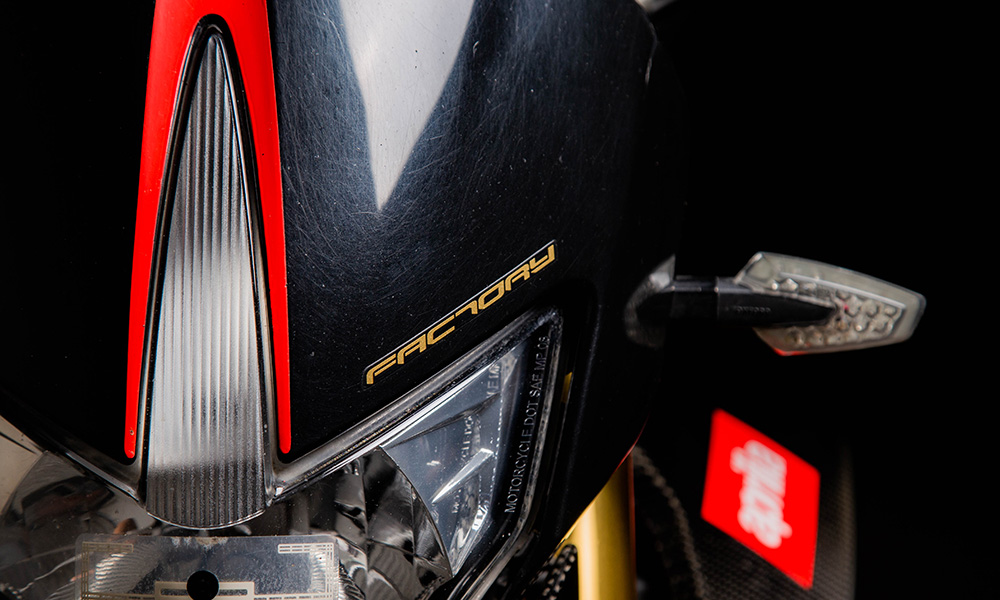
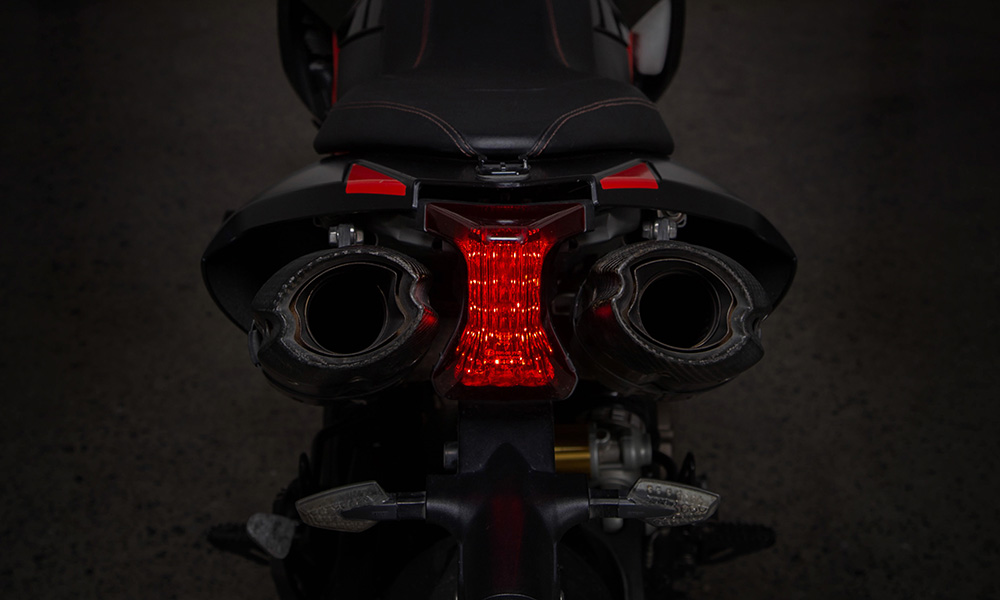
To make the Dorsoduro, Aprilia took its middleweight naked bike, the Shiver 750, and gave it higher long-travel suspension, a long flat seat, and ruggedly handsome pseudo-enduro looks.
It must be said that the Dorsoduro is not a supermoto in the truest sense of the word given its road-biased suspension setup. At 186kg (dry weight), it’s not light enough to be one either. It’s a naked bike with a splash of sumo looks and personality as a true supermoto wouldn’t be very versatile for street riding.
Photographed here, though, is not just any old Dorso 750. This is a 2014 model, the last of the Dorsoduro 750 Factory editions. Much like Yamaha’s M or Ducati’s S, Factory is Aprilia’s designation for the upgraded, high-performance version of its regular production bikes.
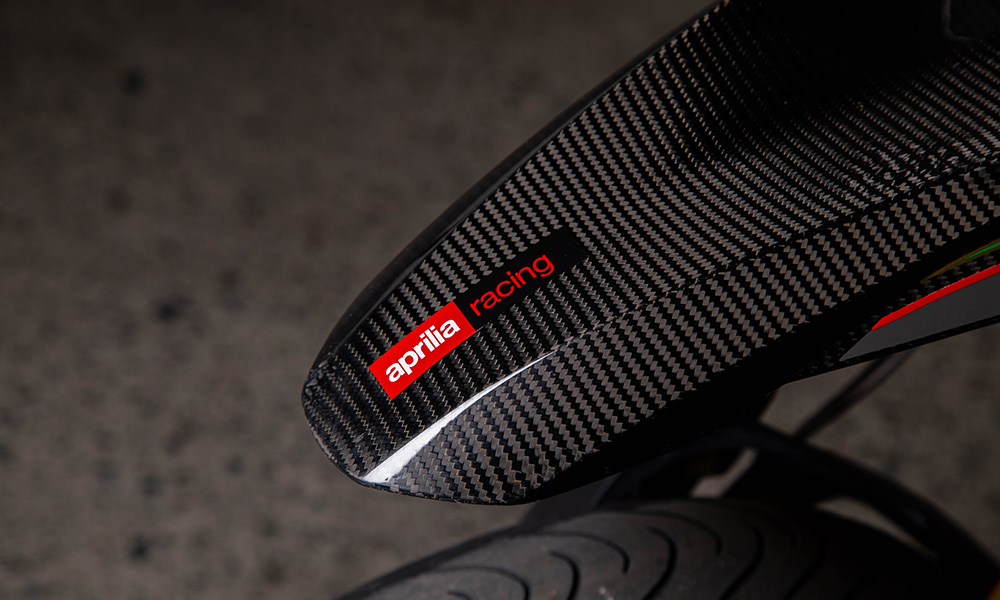
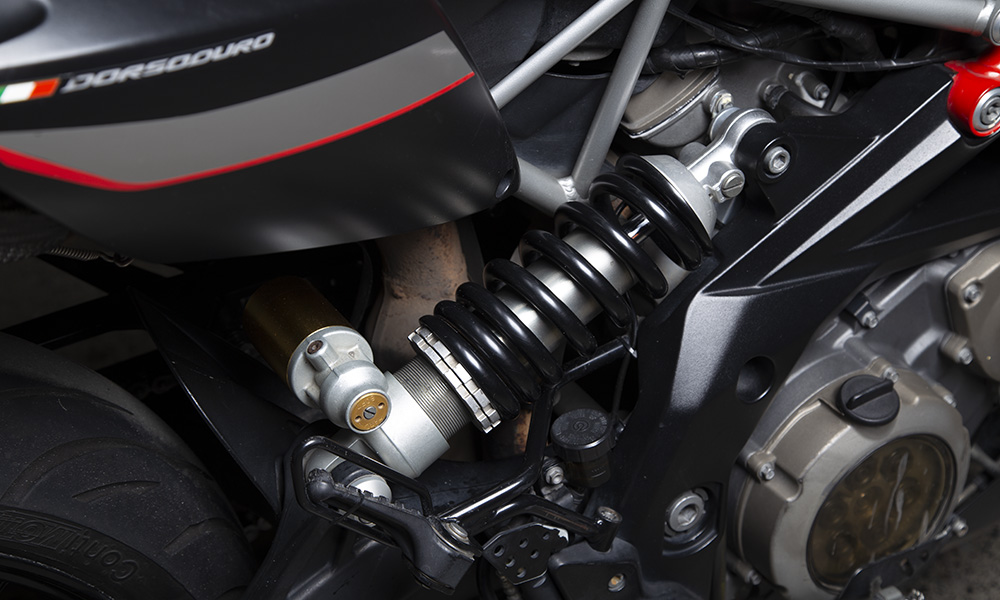
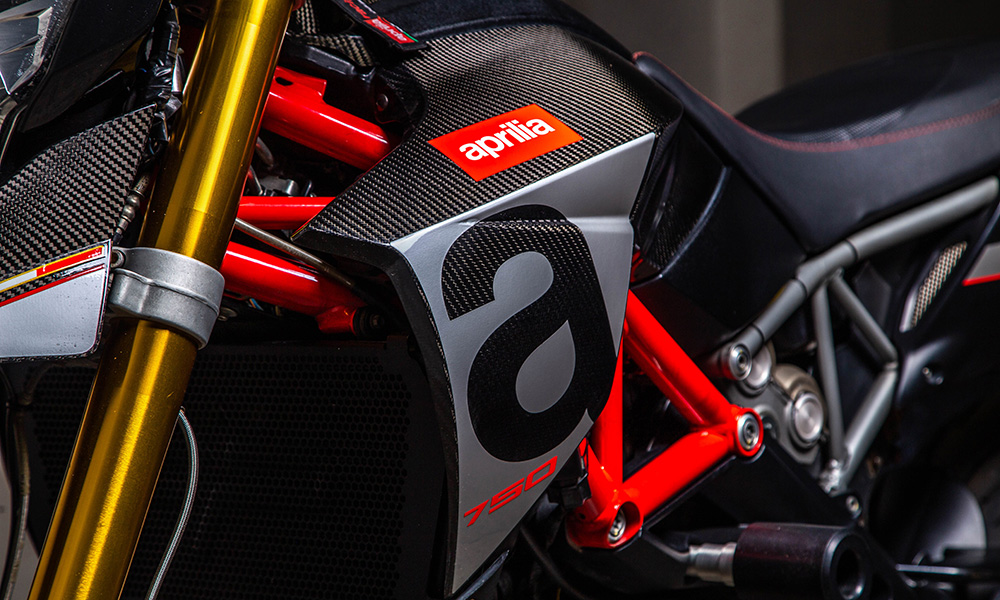
The Factory is powered by the same liquid-cooled 749.9cc 90° V-twin making 92hp and 82Nm as the standard versions, but there are a few subtle improvements. For one, the luscious carbon-fiber tank fairings and front mudguard are exclusive to this variant, as is the trellis frame finished in the brand’s signature hue of red.
The dual disc rotors mated to four-piston radial-mounted calipers up front and the single 240mm rotor in the back are supplied by Brembo instead of OEM-branded ones on the non-Factory models.
Last but not least, both the standard front fork and rear monoshocks are traded in for Sachs‘s fully adjustable system. Completing the ensemble are 17-inch alloy wheels front and back.
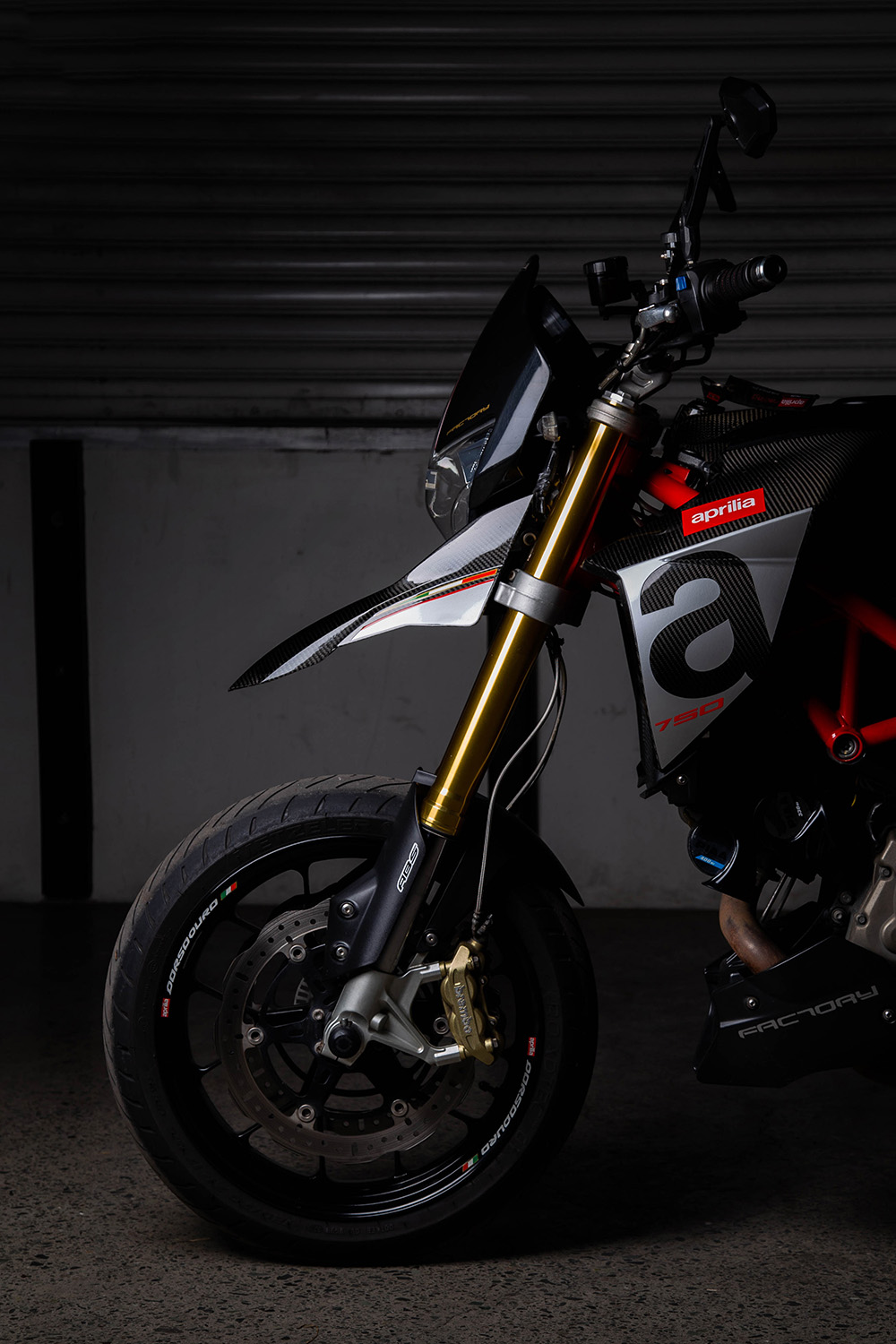
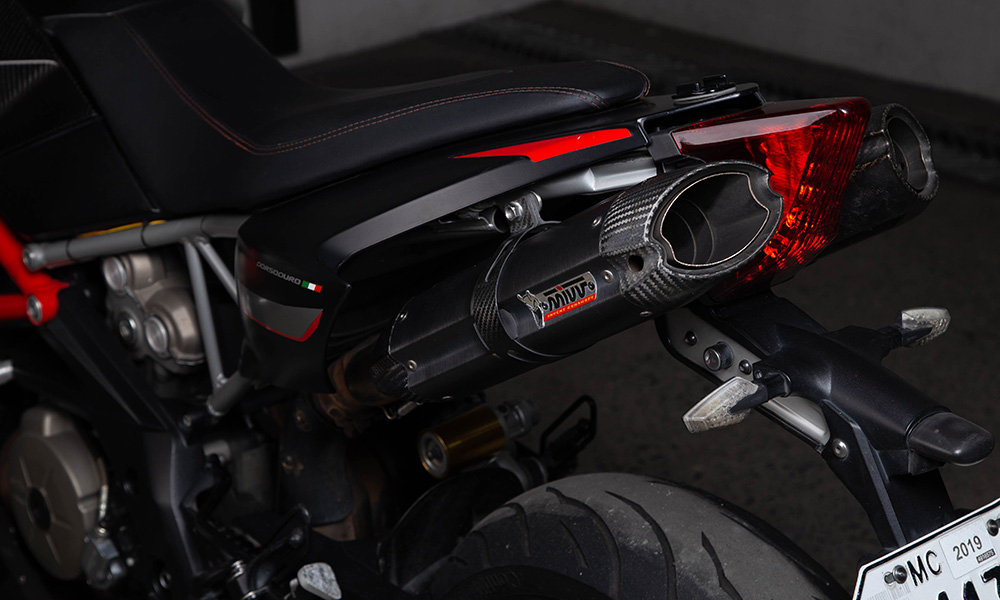
Mounting this bike requires a full roundhouse swing of the leg given its tall 870mm seat. But once you’re on, you get a commanding view of traffic in front. The handlebars meet the rider at just the right height to create an uncompromised and comfortable upright position. When the situation calls for it, the flat seat provides adjustability to the ergonomics as well by giving its user the ability to slide back for an aggressive tuck.
The height may seem prohibitive to some, especially in city traffic. But it is quite agile in tight situations. There’s almost no need for steering input at low speeds. Just lean the bike with your hips and the front darts into the direction you want to go.
Now, I could run down the spec sheet for you at this point, but that would be a very short and irrelevant list. Given the bike’s age, it doesn’t have much in the way of features. Just ABS and three riding modes (Rain, Touring and Sport), and Aprilia says you’re good to go. But therein lies the charm of this motorbike.
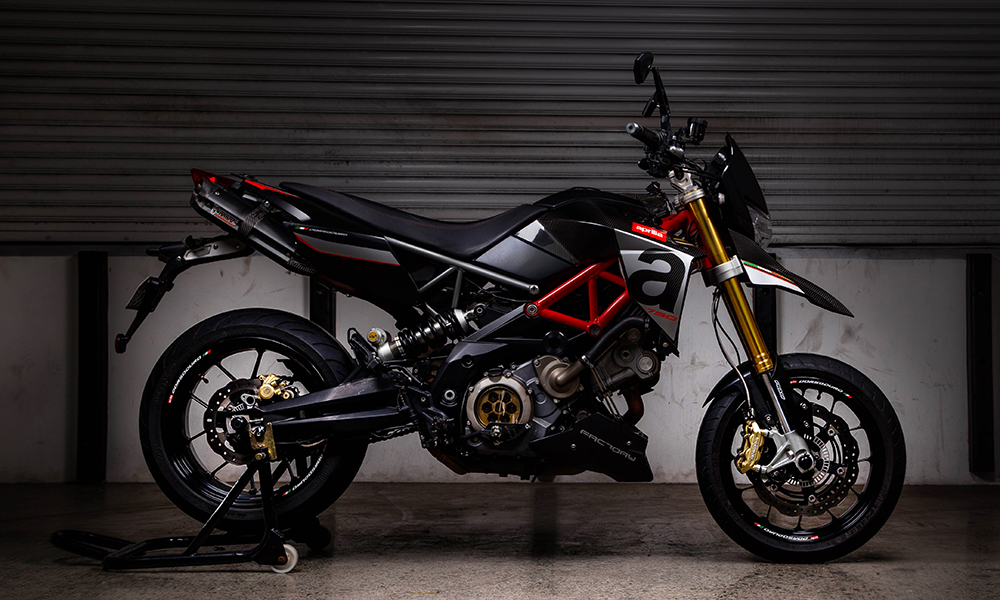
There is an honesty to it—a purity brought about by the absence of modern rider aids. There’s no traction control, no auto-blip and quickshifter, not even an assisted slipper clutch. You have absolute control. It’s not the most approachable thing, but it rewards riders who possess old-fashioned skills and timing with an engaging and thrilling experience.
This bike is extremely flattering to ride up a twisty mountain road. As you go through the gears, it exhales with a soulful, baritone growl that is almost percussive in its rhythm. There is nothing more satisfying than hearing the throttle blip and matching the revs perfectly on a downshift as you trail-brake and tip into the corner.
It goads you into leaning further into the turn and taking more speed at every corner entry because there’s so much feedback from the bike to give you the confidence to find the limit. You can almost feel exactly how much chicken strips you have left through the seat of your pants.
The flat seat tapers toward the front to give one’s outside leg ample room to grip the tank, and the high foot pegs let the rider take ridiculous amounts of lean angle without scraping metal bits on the asphalt.
Aprilia also installed a 15-tooth front sprocket on the Dorsoduro as opposed to the 16 on the Shiver. This, combined with the razor-sharp throttle and the tons of midrange power, allows the Dorso to blast out of corner exits with fury.
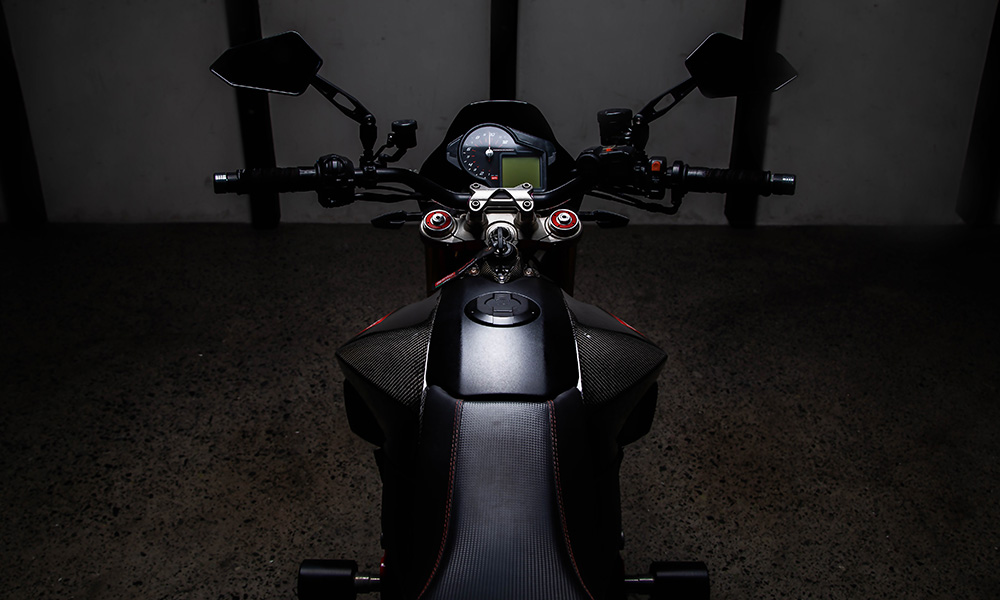
Though I am partial to this bike, I can admit that it’s not without its flaws, particularly when it comes to electronics.
Being almost a decade old as of this writing, the tachometer no longer functions. Well, the needle moves but reads 1,000rpm while cruising at 100km/h in third gear, which is clearly and audibly impossible.
The ABS on this particular unit is also shot. While the owner has attempted to repair the system in the past, the ABS light on the dash persists to this day.
The Dorsoduro and the Shiver were also among the first few motorcycles to be fitted with an electronically controlled throttle. Although very precise in feel, this early iteration of Aprilia’s ride-by-wire system can be a bit too snappy.
In touring mode, the throttle is fairly manageable. In sport mode, however, the bike can and will bite a sloppy right hand. But of all this, I say it isn’t broken—it’s Italian.
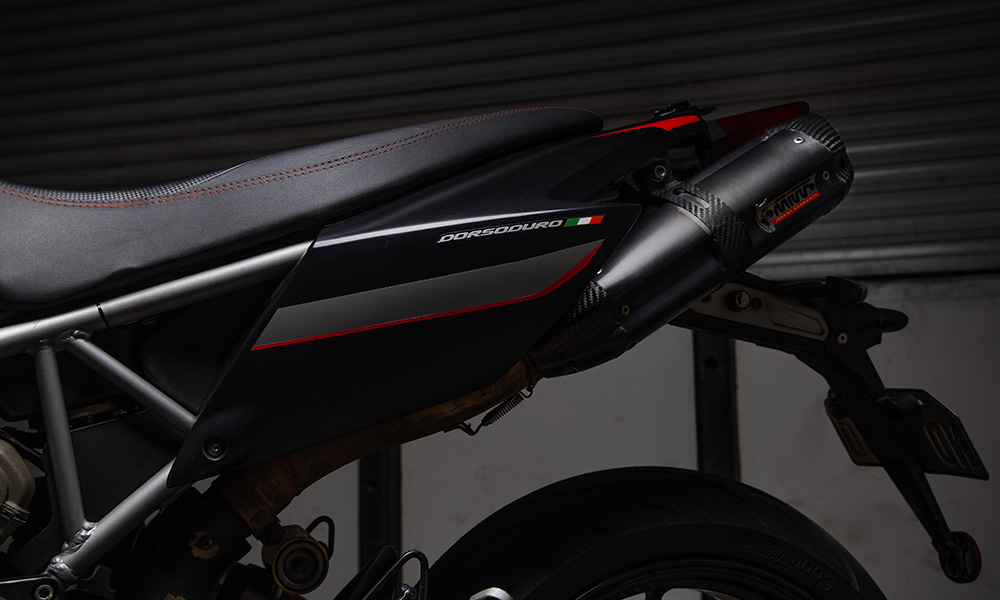
There were other versions of the Dorsoduro released, such as the 1200 in 2011, which was discontinued along with the 750 in favor of the 900 in 2018, which used the same engine as the 750 stroked out to 896.10cc.
Minor changes were made to the bike at this point, such as a digital dash and Euro 4 compliance, but a 1200 and 900 Factory never saw the light of day. Sadly, Euro 5 standards spelled the end for the Dorsoduro as the old V-twin wasn’t capable of passing it, and so it was officially put to pasture in 2021.
According to Aprilia Philippines, roughly 500 units (combined total of all Dorsoduro variants) were sold here over its 10-year tenure, and only fewer than 10 of which were 750 Factory editions making this an extremely rare sight.
This is a bike that never made a splash when it came out. It’s not the type of thing that young boys hang posters of on their bedroom walls. It lived (and died) quietly behind the shadow of Ducati’s Hypermotard—never seen for what it truly was.
A real shame, as this is a fun-loving, agile and versatile machine that will make you fall in love. I know I have. Rather hopelessly, in fact.


0 Comments